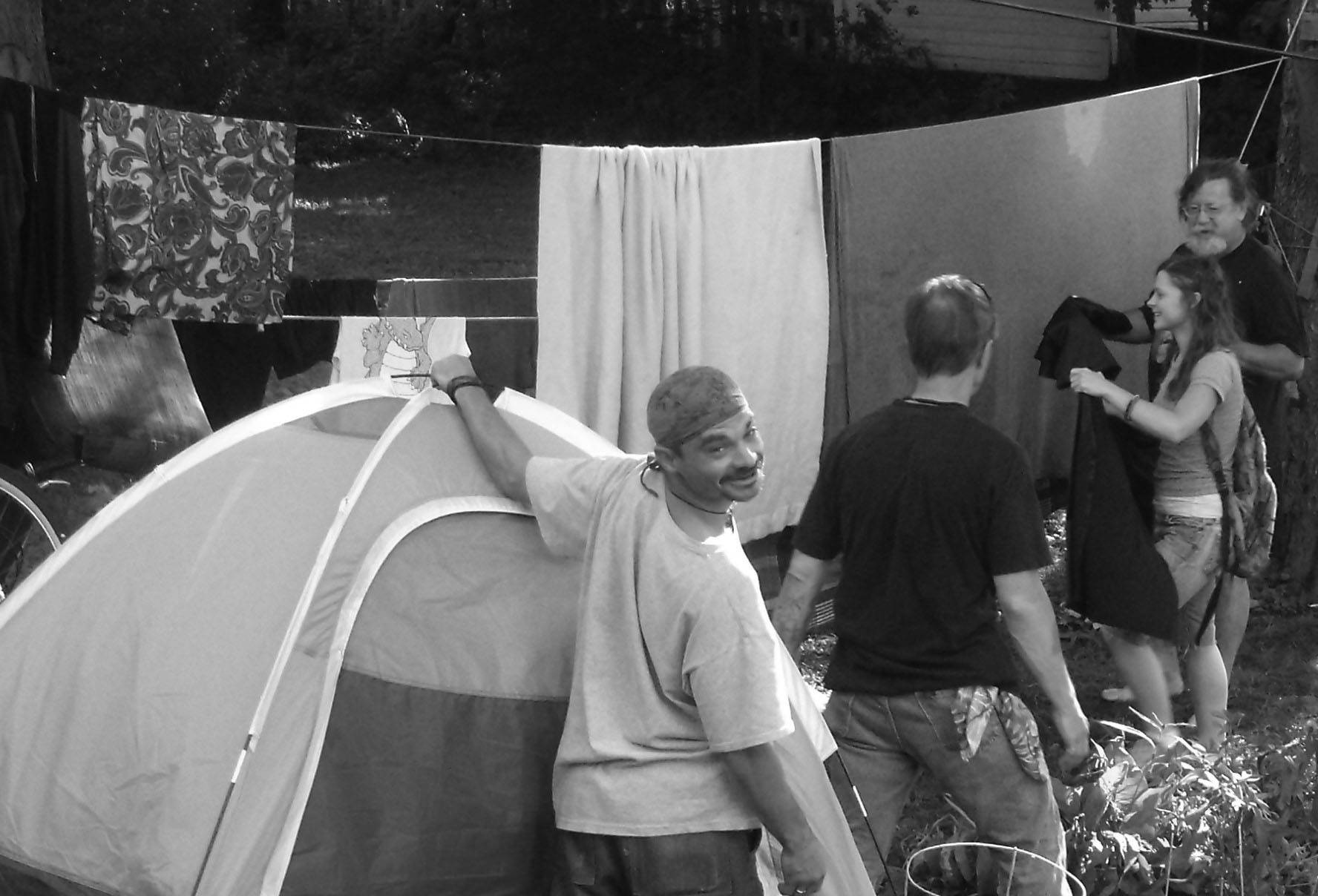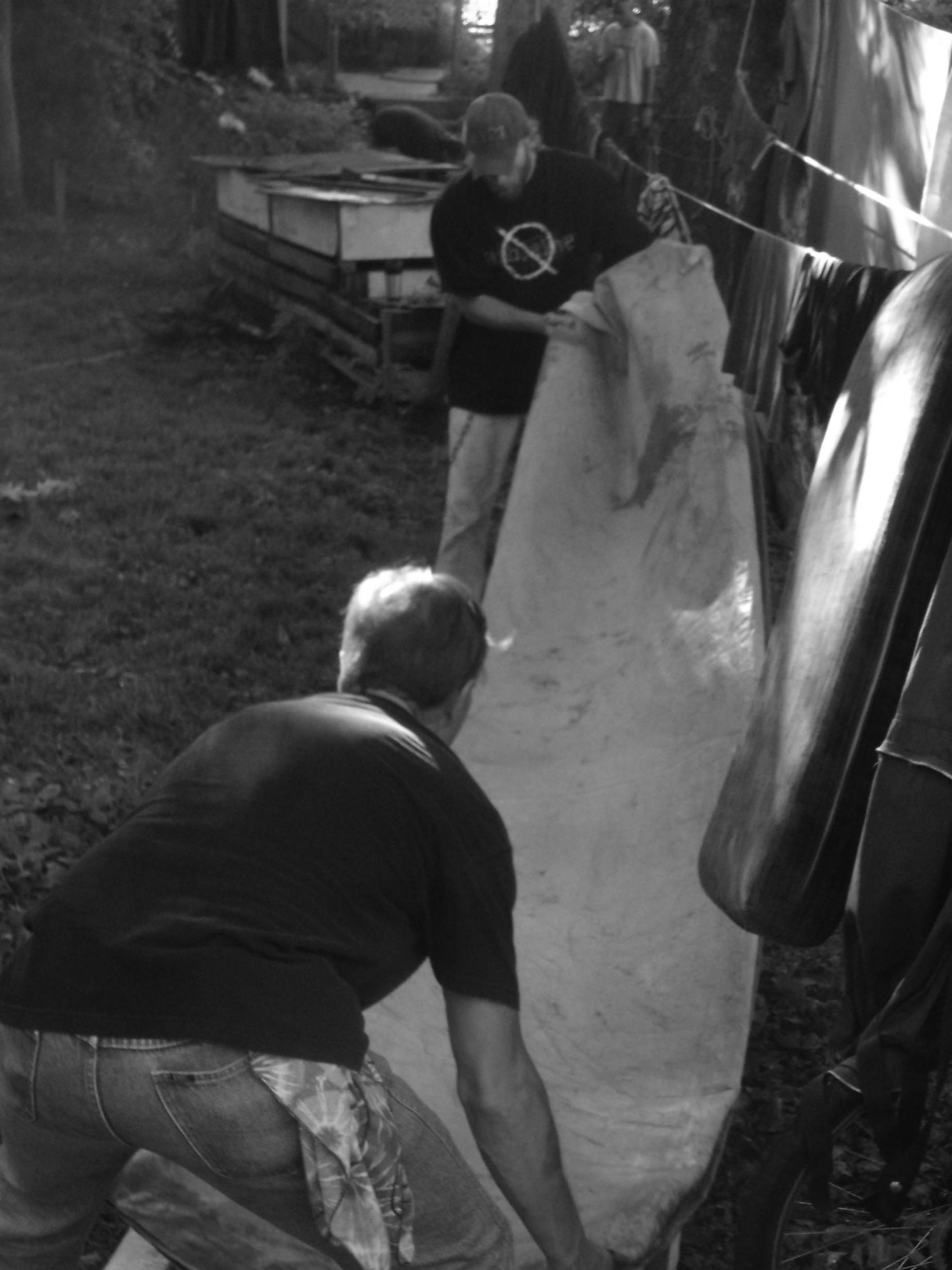
For years, homeless people have been camping in vacant lots, by the railroad tracks, and in other spots around Champaign. Now, some of those people have decided to band together in community.
Although the idea of a tent community is new to Champaign-Urbana, these sorts of communities have been popping up all over the country and are being compared to the Hoovervilles of the Great Depression. Various camps have been reported all along the West Coast — in Washington, Oregon, and California — as well as in places like Athens, Ga.; Reno, Nev.; Nashville, Tenn.; and St. Petersburg, Fla.
Jesse Masengale, 22, is a resident of Safe Haven, the tent community that formed a few weeks ago here in Champaign and has been a popular news topic in recent days. Masengale started camping in the vacant lot adjacent to Champaign’s Catholic Worker House, and before long, people started asking him about it. The community of campers began coming together organically, and then officially organized after an incident with the police on June 8, 2009 (see Incident Report #1).
“The way the police treated us that night really ignited a fire in everybody’s hearts. We were like, ‘Okay, let’s do this,'” Masengale said.
From the very beginning, Safe Haven’s standard has been “no riff-raff.” They expect no drinking, no drugs, no stealing, no violence — no riff-raff. They are attempting to establish a community characterized by safety, authority, and respect.
Safe Haven currently has 10 mutually agreed-upon guidelines that are enforced within the community (based, in part, on the rules established by Dignity Village in Portland, Ore.):
- No physical violence to self or others is permitted within a one-block radius of the Safe Haven site.
- No intake of alcohol, drug use, or possession of alcohol, drugs, or drug paraphernalia is permitted within a one-block radius of the Safe Haven site.
- No theft of others’ property is permitted within a one-block radius of the Safe Haven site.
- No behavior that disrupts the peace and well-being of the community is permitted within a one-block radius of the Safe Haven site.
- No possession of stolen property is permitted on the Safe Haven site.
- No weapons are permitted on the Safe Haven site. Knives of four inches or less are permitted for utility purposes.
- All members and guests contribute to the upkeep and welfare of Safe Haven and work to become a productive community member.
- All rules of the host organization must be followed by members and guests of Safe Haven.
- Members are required to perform seven hours of service per week to the Safe Haven community and/or the host community.
- No verbal abuse or verbal threats are permitted on the Safe Haven site.
For this group of people, who would normally camp solo around the city, Safe Haven provides an element of law and order. Abby Harmon, 27, a Safe Haven advocate, described the homeless community as a community ruled by might. Imagine if there was no police intervention in your neighborhood and any person stronger than you could come into your house, beat you up, take your possessions, and assume residence in your home. Those camping solo around town experience this often. Another homeless person might beat them up, steal any possessions they have, and take their camping spot.
When camping solo, people are surviving by themselves and will often resort to violence when they feel threatened. Coming together in community takes away some of that individualistic tendency to protect the self at all cost. People start looking out for each other. It also allows the community to develop expectations and to make and enforce rules.
“I don’t think people see a tent community as introducing order, but it is,” Harmon said.
In opposition to Safe Haven’s ideals of law and order, some people who live in the neighborhood surrounding the Catholic Worker House have expressed safety-related concerns. (If you’re unfamiliar with the neighborhood complaints regarding the Catholic Worker House, check out last Tuesday’s News-Gazette article for an overview.) Masengale and Harmon agreed that some neighbors have legitimate concerns, but pointed out that those concerns are being falsely linked to Safe Haven.
Homelessness is on the rise nationally, as the current state of the economy has led to increased foreclosures and unemployment. As people become increasingly desperate, problems such as theft increase. Neighbors surrounding the Catholic Worker House began noticing problems in the middle of winter, months before Safe Haven began. The beginning of neighborhood problems and the beginning of Safe Haven have been perceived as one and the same, but are actually very separate issues.
 “It’s all a misunderstanding,” Masengale said. “People had legitimate complaints. But once the community started up and once we started policing, problems like drinking on the [Catholic Worker] property stopped almost immediately.”
“It’s all a misunderstanding,” Masengale said. “People had legitimate complaints. But once the community started up and once we started policing, problems like drinking on the [Catholic Worker] property stopped almost immediately.”
Safe Haven residents do not have authority to police the entire neighborhood; they can only police their own community. Essentially, Safe Haven cannot control drunkenness, vandalism, and other disruptive behavior that is committed by homeless people who are not residents of the tent community. But within the Safe Haven community, Masengale and Harmon made it clear that residents want to be part of the solution, not part of the problem.
Safe Haven currently has eight members and additional guests. Members participate in weekly meetings, decision making, and policing. Guests, on the other hand, simply stay at Safe Haven temporarily.
“[Safe Haven] has given people something to live for — a place to call home, a place to sit down,” Masengale said. “Up until now, they’ve been camping wherever they can find a spot, wherever they could lay their heads. But now to have a place to call home … it does something to them.”
———
Over the next few days, Smile Politely will take a closer look at options for homeless people in Champaign-Urbana and Safe Haven’s ideal solution, modeled after Dignity Village in Portland, Ore. Continue to Part 2 and Part 3 of the series.








